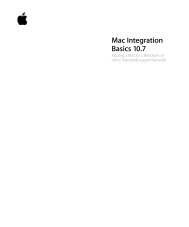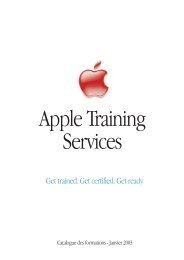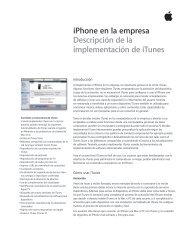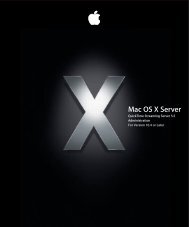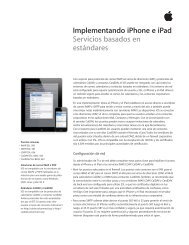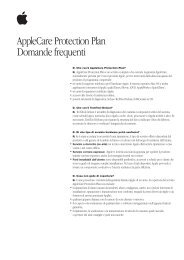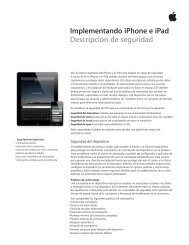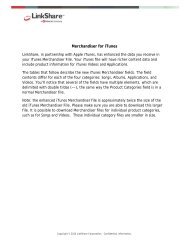In-House App Development Accelerator Guide - Apple
In-House App Development Accelerator Guide - Apple
In-House App Development Accelerator Guide - Apple
Create successful ePaper yourself
Turn your PDF publications into a flip-book with our unique Google optimized e-Paper software.
With iOS you can deliver content and information in simple, yet powerful new ways to help your<br />
employees be more productive. Leveraging the iOS SDK, your development team will be building<br />
apps using the same tools <strong>App</strong>le engineers use to build the OS and the apps that ship with every<br />
iPhone and iPad. This enables you to create apps that look, feel, and respond to your users elegantly<br />
and with maximum e∑ ciency.<br />
Using iOS tools you can leverage high-level frameworks that help you take full advantage of the<br />
platform. We’ll explore the essential APIs for in-house development to give you ideas for integrating<br />
these capabilities into your apps. We’ll also discuss how you can leverage web technologies by using<br />
HTML5, CSS, and JavaScript. With the right security features built into your solution, these technologies<br />
work together to create a powerful, secure foundation that supports your business needs.<br />
Finally, before you can consider your app ready for users, you’ll want to thoroughly test and debug<br />
it. You’ll also want to validate its performance on di∂ erent devices. We’ll discuss how iOS tools help<br />
you perform those tasks and suggest best practices for making sure your app works the way you<br />
intend it to.<br />
Native <strong>Development</strong><br />
<strong>Development</strong><br />
When it comes to in-house development, it’s all about executing the vision of your app design, taking<br />
full advantage of the device’s capabilities, and doing so in a organized and e∑ cient environment. The<br />
iOS SDK includes Xcode, the IDE for coding, building, and debugging your app; <strong>In</strong>terface Builder for<br />
creating the UI; <strong>In</strong>struments to analyze behavior and performance; and dozens of additional tools.<br />
Xcode is the hub of your development experience. Xcode provides code completion,<br />
real-time static analysis, and instant on-device debugging.<br />
<strong>In</strong>terface Builder makes it simple to prototype your app. Drag elements to create a full user<br />
interface without writing any code. With Xcode 4, <strong>In</strong>terface Builder is built right into the<br />
Xcode IDE.<br />
<strong>In</strong>struments collects and displays data such as disk, memory, or CPU usage in real time,<br />
making it easy to pinpoint problem areas.<br />
The Simulator runs your app in much the same way an iOS device would, so you<br />
can verify and test your code right from your desktop environment.<br />
Planning • Design • <strong>Development</strong> • Deployment<br />
<strong>Development</strong> Checklist<br />
By the end of the development phase, you should have a basic<br />
understanding of:<br />
iOS SDK tools, including Xcode, <strong>In</strong>terface Builder, <strong>In</strong>struments, and Simulator<br />
The key APIs and frameworks for enterprise in-house development<br />
Web app development<br />
iOS architecture for accessing data in back-o∑ ce systems<br />
Best practices for securing your in-house apps<br />
Testing, debugging, and performance validation of your app<br />
“ It is my team’s experience that SDK and Xcode are<br />
fantastic programming tools and very easy to use,<br />
even for developers not coming from a Mac<br />
background.”<br />
—Hans-Christian Pahlig, Axel Springer<br />
17






